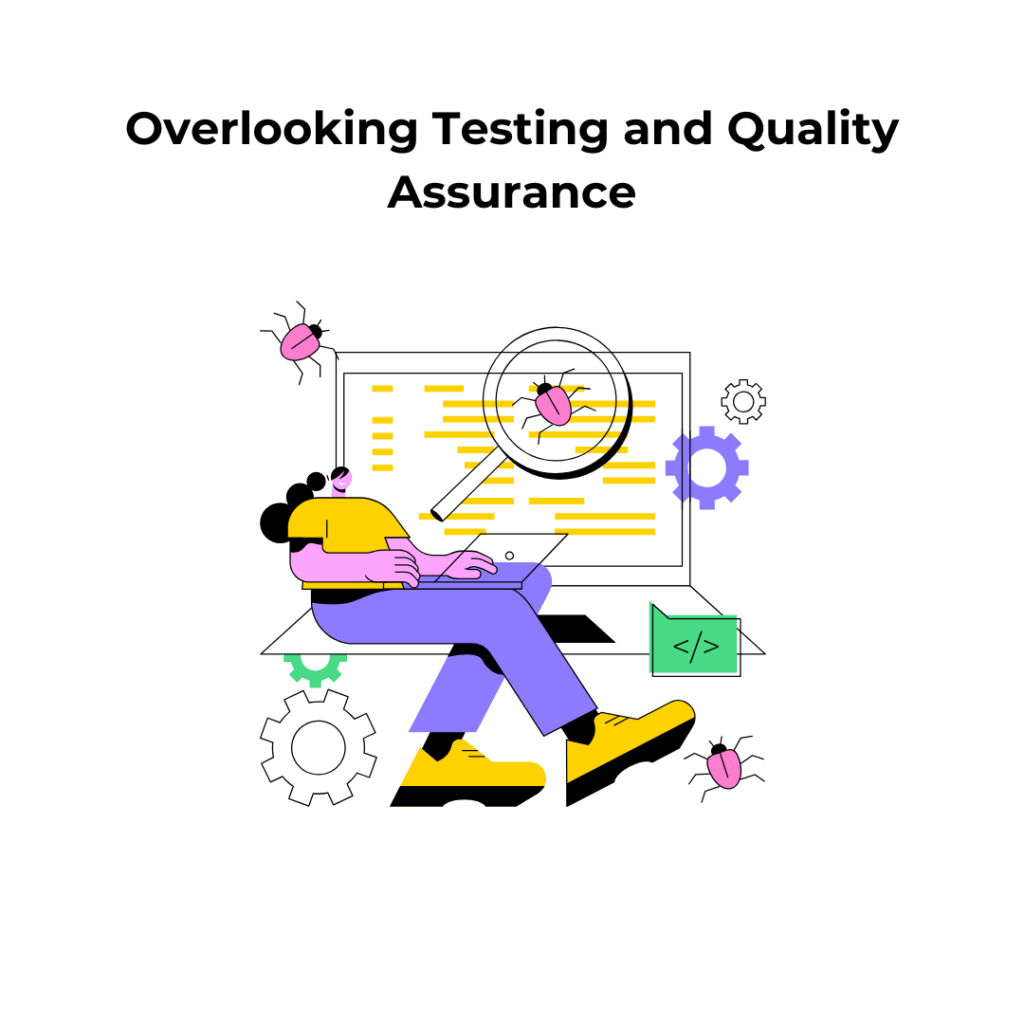Introduction: Why Avoiding Mistakes in Software Development Matters
Software development is a complex process that requires precision, collaboration, and careful planning. Even experienced developers can fall prey to common software development mistakes, leading to costly delays, bugs, and dissatisfied users. By understanding these pitfalls and how to avoid them, teams can enhance productivity, ensure quality, and deliver successful projects.
Mistake #1: Poor Requirements Gathering and Analysis

One of the most critical steps in software development is gathering clear and comprehensive requirements. Neglecting to do so frequently results in
- Misunderstanding client needs.
- Developing features that users don’t need.
- Wasted time and resources on revisions.
How to avoid this mistake:
- Conduct thorough stakeholder interviews.
- Use techniques like user stories and use case diagrams to clarify needs.
- Regularly validate requirements with clients and team members.
Mistake #2: Underestimating the Importance of Planning and Design

Jumping into coding without a solid plan is a recipe for disaster. Poor planning can result in:
- Misaligned goals.
- Inefficient workflows.
- Code that is difficult to maintain or scale.
How to avoid this mistake:
- Spend adequate time on architectural planning.
- Use design tools like UML diagrams to map out the system.
- Define milestones and deliverables clearly.
Mistake #3: Ignoring Code Reviews and Best Practices

Neglecting regular code reviews or skipping best practices can lead to poorly written and buggy code. Common issues include:
- Inconsistent coding styles.
- Unoptimized logic.
- Hidden bugs that escalate during later stages.
How to avoid this mistake:
- Establish a code review policy within the team.
- Use tools like linters and static analyzers to enforce coding standards.
- Encourage peer reviews and knowledge sharing.
Mistake #4: Overlooking Testing and Quality Assurance

A lack of rigorous testing is one of the most common software development mistakes that can compromise software quality. Issues may include:
- Missed bugs that affect user experience.
- Vulnerabilities that compromise security.
- Reduced trust in the product.
How to avoid this mistake:
- Integrate testing at every stage of development (unit, integration, and system testing).
- Use automated testing tools for efficiency.
- Conduct thorough regression testing after every change.
Mistake #5: Neglecting Scalability and Performance Optimization

Developers often focus on immediate functionality rather than long-term scalability. This oversight can lead to:
- Systems that fail under heavy load.
- Higher costs for infrastructure upgrades.
- Poor user satisfaction due to slow performance.
How to avoid this mistake:
- Consider scalability when designing.
- Use load testing tools to measure performance.
- Optimize code and database queries regularly.
Mistake #6: Lack of Proper Documentation

Poor or non-existent documentation creates challenges for future developers and stakeholders. Common problems include:
- Difficulty onboarding new team members.
- Increased dependency on individual developers.
- Wasted time trying to understand outdated code.
How to avoid this mistake:
- Document code thoroughly, including APIs and workflows.
- Use tools like wikis or README files to centralize documentation.
- Update documentation regularly to reflect changes.

Mistake #7: Poor Communication Among Teams
Even the most promising programs can be derailed by poor communication.:
- Confusion about project requirements.
- Misaligned priorities.
- Increased frustration and reduced team morale.
How to avoid this mistake:
Use collaboration tools like Slack, Microsoft Teams, or Trello.
Schedule regular stand-ups or progress meetings.
Encourage open feedback and cross-functional communication.
Mistake #8: Mismanagement of Time and Deadlines

Improper time management can lead to missed deadlines and frustrated stakeholders. Causes include:
- Overestimating or underestimating task durations.
- Failing to account for unforeseen challenges.
- Overloading team members with unrealistic expectations.
How to avoid this mistake:
- Use agile methodologies like Scrum or Kanban to manage timelines effectively.
- Break tasks into smaller, manageable chunks.
- Continuously monitor progress and adjust schedules as needed.
Mistake #9: Overreliance on Technology or Tools

While tools are essential, over-dependence on them can cause problems such as:
- Reduced flexibility in adapting to new challenges.
- Ignoring human intuition and expertise.
- Adopting tools without fully understanding their limitations.
How to avoid this mistake:
- Evaluate tools carefully before adoption.
- Train teams to use tools effectively.
- Balance tool usage with critical thinking and manual oversight.
Mistake #10: Failing to Address Technical Debt

Accumulating technical debt without a plan to resolve it can slow down development and impact project quality. Issues include:
- Increased cost and time for future updates.
- Difficulty maintaining or scaling the application.
- Declining team productivity.
How to avoid this mistake:
- Regularly refactor and optimize code.
- Prioritize resolving technical debt during sprint planning.
- Allocate time specifically for technical improvements.
How to Identify and Rectify Software Development Mistakes
- Conduct regular retrospectives to identify improvement areas.
- Use project management tools to track issues and progress.
- Foster a culture of continuous learning and improvement.
Best Practices to Avoid Common Software Development Mistakes
- Involve all stakeholders early and often.
- Keep abreast with the most recent tools and developments in the industry.
- Make an investment in your team’s skill development and training.
- Prioritize collaboration and teamwork.
Conclusion: Coding Smarter for Better Outcomes
Avoiding common software development mistakes requires a proactive approach, continuous learning, and effective collaboration. By addressing these challenges head-on, teams can deliver high-quality software that meets user expectations, stays within budget, and scales effectively for the future.


